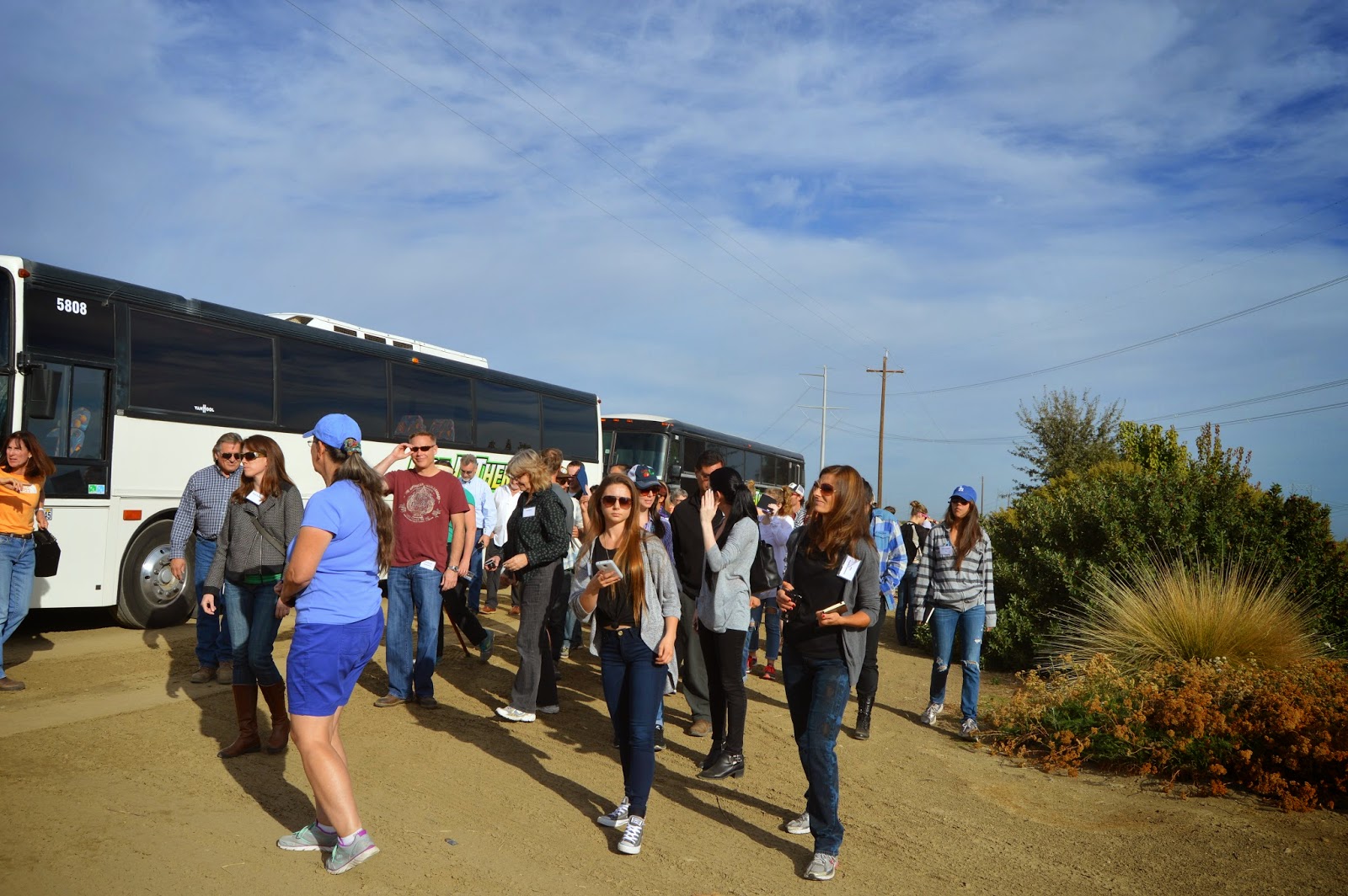Field scouts Jenna Horine and Carlos
Silva wrote up a holiday wish list for the New Year: a good supply of water,
few pest problems, healthy population of bees, nice planting and growing
conditions, safety for all workers and an early, bountiful harvest.
As we wish everyone a joyous holiday season,
we’d like leave you with what we call
The Twelve Days of Harvest
On the first day of harvest
My farmer sent to me
A pest control advisor in a Chevy
truck
On the second day of harvest
My farmer sent to me
Two bee boxes
And a pest control advisor in a
Chevy truck
My farmer sent to me
Three alfalfa fields
Two bee boxes
And a pest control advisor in a
Chevy truck
On the fourth day of harvest
My farmer sent to me
Four cotton bales
Three alfalfa fields
Two bee boxes
And a pest control advisor in a
Chevy truck
On the fifth day of harvest
My farmer sent to me
Five golden almonds
Four cotton bales
Three alfalfa fields
Two bee boxes
And a pest control advisor in a
Chevy truck
My farmer sent to me
Six sweepers sweeping
Five golden almonds
Four cotton bales
Three alfalfa fields
Two bee boxes
And a pest control advisor in a
Chevy truck
On the seventh day of harvest
My farmer sent to me
Seven almond trees a shaking
Six sweepers sweeping
Five golden almonds
Four cotton bales
Three alfalfa fields
Two bee boxes
And a pest control advisor in a
Chevy truck
My farmer sent to me
Eight Modules making
Seven almond trees a shaking
Six sweepers sweeping
Five golden almonds
Four cotton bales
Three alfalfa fields
Two bee boxes
And a pest control advisor in a
Chevy truck
On the ninth day of harvest
My farmer sent to me
Nine gins ginning
Eight Modules making
Seven almond trees a shaking
Six sweepers sweeping
Five golden almonds
Four cotton bales
Three alfalfa fields
Two bee boxes
And a pest control advisor in a
Chevy truck
My farmer sent to me
Ten cotton pickers pickin’
Nine gins ginning
Eight Modules making
Seven almond trees a shaking
Six sweepers sweeping
Five golden almonds
Four cotton bales
Three alfalfa fields
Two bee boxes
And a pest control advisor in a
Chevy truck
On the eleventh day of harvest
My farmer sent to me
Eleven drip lines irrigating
Ten cotton pickers pickin’
Nine gins ginning
Eight Modules making
Seven almond trees a shaking
Six sweepers sweeping
Five golden almonds
Four cotton bales
Three alfalfa fields
Two bee boxes
And a pest control advisor in a
Chevy truck
My farmer sent to me
Twelve best management practices
Eleven drip lines irrigating
Ten cotton pickers pickin’
Nine gins ginning
Eight Modules making
Seven almond trees a shaking
Six sweepers sweeping
Five golden almonds
Four cotton bales
Three alfalfa fields
Two bee boxes
And a pest control advisor in a
Chevy truck
Happy 2015!



















